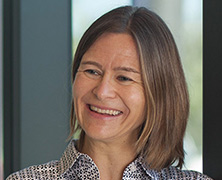What can be done to increase diversity in STEM fields?
As the STEM workforce grows, statistics continue to highlight the massive underrepresentation of diverse talent. Efforts need to be made to change attitudes and perceptions toward STEM to increase diversity. Early exposure of kids to the opportunities in STEM is of utmost importance. All kids have a natural curiosity and are excited about nature, science and technology. We need to continuously feed that enthusiasm, so it lasts into adulthood and we need to help youngsters determine their interests so they can funnel them into a career. Educators who know how to teach STEM should integrate science into our foundational school curriculum early and show students how science solves real world problems. Exposing students to STEM through science fairs and exhibits, and teaching STEM courses in school are beneficial but ultimately, it is the responsibility of parents and society as a whole to showcase the boundless opportunities in these fields. The current generation can help to dispel misconceptions and stereotypes associated with STEM as well as serve as resources for future generations regarding career opportunities. Of equal importance in encouraging more diverse youth to enter STEM are relationships with those already in the field. By engaging early on with these future scientists, there is greater potential to keep them engaged through confidence building and encouragement as they face obstacles that might sway them from their path, whether it be financial hardship, the fear of being different, or other variables that have historically led to a lack of diversity in our field.
Where do you see women in STEM in five years?
Raising public awareness and attempting to break down barriers will continue to result in more women choosing a career in STEM and staying in STEM jobs. Priority should be taken to empower women in STEM to educate, provide opportunities, and act as role models & advocates for young women and girls so that they can be successful in STEM careers. Hopefully, there will be a point where gender parity is simply the norm. Diversity, equity, and inclusion movements in recent years have highlighted the underrepresentation of women in STEM, which has led to the creation of initiatives to address the gender imbalance. I think we are on the right trajectory but there is a lot more work to do and it will take time. Hopefully, the upward trend of women in STEM continues in five years and well beyond. I hope we will see more women in leadership roles and gender wage disparities will begin to disappear. The future is bright for women in STEM.







